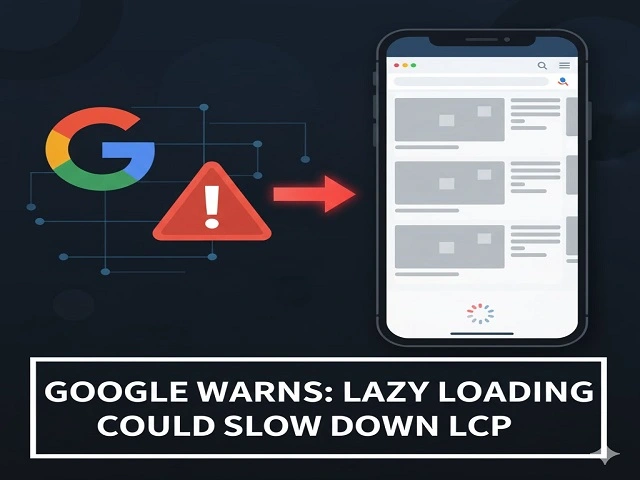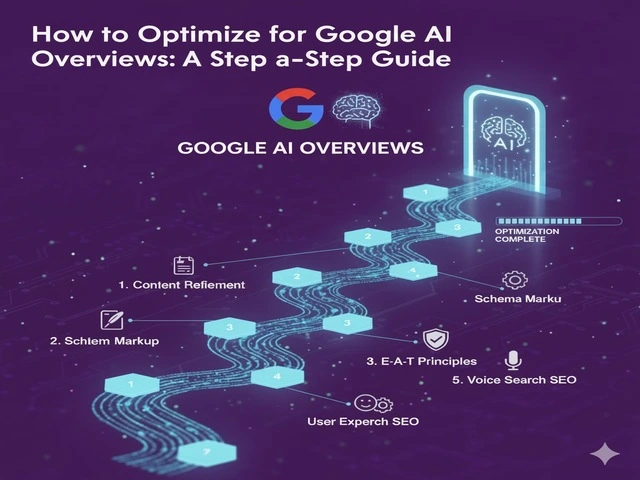Website performance is no longer merely a technical measure. It shows how well users can find your site and how well it works. A page’s loading speed can either keep a visitor or make them leave. But more crucially, it can affect how well a site does on search engines. Largest Contentful Paint (LCP) is one of the most important performance metrics that Google uses today. It gauges the speed at which a page’s best visual element loads and appears to the user.
Google has just released an important warning that is causing concern among web developers and SEO professionals: if lazy loading is not implemented correctly, it could potentially slow down LCP. Many people who utilize lazy loading to make their sites run faster are surprised by this. The very method intended to speed things up might actually be slowing down important content, which would harm both page speed and Google search rankings.
Understanding lazy loading and its purpose
Lazy loading is a way to improve performance by only loading images or videos when they are going to be seen by the user. It uses less bandwidth and speeds up the loading time of the first page. This looks like a good approach to speed up loading times, especially for pages with several images.
The difficulty comes up, though, when lazy loading is used on important graphic items, especially those above the fold. When an important part, such as a hero picture or featured banner, is lazy-loaded, the browser waits to load it until the user scrolls. This directly increases the time it takes for the Largest Contentful Paint to load.
Why LCP matters more than ever
Google Core Web Vitals include Largest Contentful Paint. It prioritizes how quickly people can see and interact with a page’s most critical content. If LCP takes more than 2.5 seconds, Google considers the page sluggish, which might hurt ranking.
Poor LCP scores affect user happiness beyond rankings. Website visitors correlate longer loading times with lower quality. They bounce more, convert less, and probably won’t return. Thus, page speed is a business need, not merely a technological issue.
How lazy loading affects your Google rank
Many people think that lazy loading always helps. It slows down the loading of important graphic elements when done without care. These delays are bad for Google’s algorithms. A slow LCP means a bad user experience, which might affect your Google rank.
The goal of Google’s most recent upgrades is to find out how quickly people can get useful information. A slow-loading LCP element will hurt your Google search rank even if the rest of your content is optimized. Therefore, not prioritizing LCP could harm your SEO efforts.
The mistake most websites make
Many websites use lazy loading on all of their photos and media. This all-encompassing approach generally includes the most obvious parts, which are the ones people see first. This is a terrible mistake. The LCP element is often the first thing you can see or the initial block of material. The page feels slow if this takes too long.
Selective application is what is needed. You shouldn’t lazy-load every image. Important content and above-the-fold content should always load right away. If you wait too long for the browser to get essential images, it will slow down the page speed and hurt its Google search rank.
Smarter ways to handle lazy loading
Google recommends not to use lazy loading for the LCP element. Lazy loading should not include graphics and important text blocks that are above the fold. Instead, those parts should be set up to load as soon as feasible.
For first-page pictures, use the link rel=”preload” tag. This prompts the browser to fetch resources earlier, improving load time. Image compression, responsive scaling, and current formats like WebP speed up loading without lazy loading.
Tools to measure and optimize LCP
To make Largest Contentful Paint better, you need to know what parts of it make it work. You can use Google’s PageSpeed Insights and Lighthouse tools to find the LCP element on each page. Once you find it, it’s easier to tell if lazy loading is hurting performance.
Remove lazy loading, optimize its size, and enhance server response times to see measurable benefits. LCP below 2.5 seconds indicates a positive user experience to Google, enhancing credibility and Google rank.
Keywords no longer dominate search algorithms. They are systems that focus on the experience. Google now prioritizes first-click user experiences. Page speed, interaction, and visual stability are crucial.
Fast-loading sites gain user confidence and rankings. Businesses should stop seeing performance as a backend issue. Front and center, it affects engagement, loyalty, and conversion. Poor sluggish loading now threatens digital visibility.
At SAVIT INTERACTIVE a trusted digital marketing agency in India, we’ve helped clients who weren’t aware they were slowing down their websites by misusing lazy loading. Their performance and visibility got better practically right away after we changed it. To enhance your search presence and ensure your site is fully optimized, explore what we have to offer at https://www.savit.in/.



